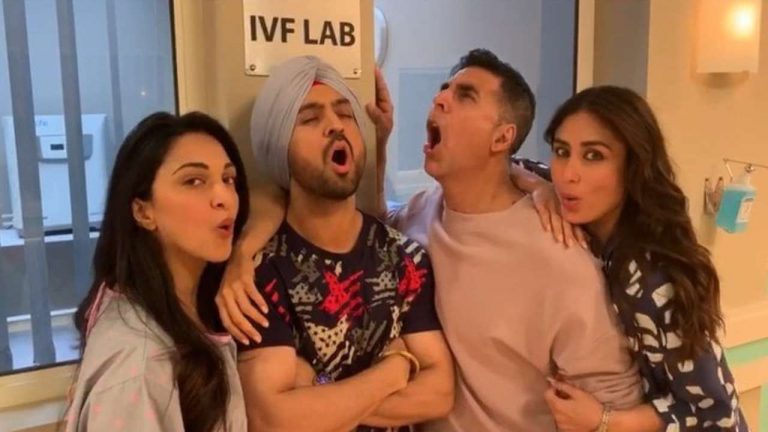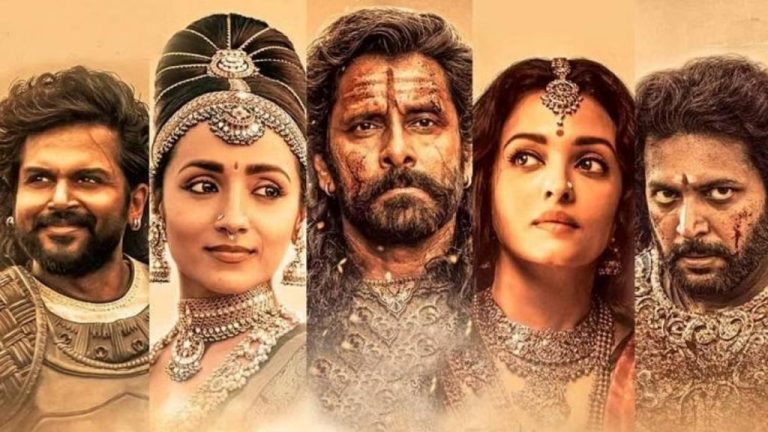Delhi-6 (2009): The Lanes Holding A Million Stories
“Zarre zarre mein usi ka noor hai;
Jhaak khud me, vo na tujhse door hai.
Ishq hai usse, tu sabse ishq kar;
Is ibadat ka yahi dastoor hai.”
Visiting the narrow lanes of Purani Dilli from the eyes of Roshan, an American NRI, in Rakeysh Omprakash Mehra’s 2009 film Delhi-6 is a bit overwhelming, especially for those belonging or connected to Delhi. A man is pulled out from the calm and sophisticated American life and is put in the middle of the chaotic streets of Old Delhi. There’s a constant buzz around as if something has happened and yet there’s a balance – observes Roshan. In this chaos and buzz, Annapoorna Devi finds her home while Roshan sees himself as never before.
Binod Pradhan’s camera swims through the crowd, glancing over the towering Jama- Masjid and taking in the bliss of the city, while A. R. Rahman’s Arziya plays in the background, saying “Mora piya ghar aaya.”
As Roshan Mehra (Abhishek Bachan) and his Dadi, Annapoorna Devi (Waheeda Rehmaan) move towards their house, they find the cramped up lanes flooded with people; someone putting some kind of sweet in their mouth, saying ‘Ye yahan ki speciality hai’, someone offering garland to them, someone touching feet, someone giving a hug. Passing from those swamped up roads, Roshan and Annapoorna, escorted by Ali Baig (Rishi Kapoor), reach their purani haveli which has been standing there since 1808. In India, taps may run dry, but amazingly tear ducts never do – observes Roshan.
Related Read to Delhi-6 (2009): Nayattu (2021) Netflix Review : A Taut Thriller Of Contradictory Politics
Because dadi wished to spend the last days of her life in her home, Roshan had come to India to drop her. As the story proceeds, we are introduced to the entire neighborhood including Bittu (Sonam Kapoor), an Indian Idol aspirant, Mamdu (Deepak Dobriyal), Gobar (Atul Kulkarni), Haji Suleman (K. K. Raina), Lala ji (Prem Chopra), Suresh, Jalebi (Divya Dutta), the two brothers always fighting Jaigopal and Madangopal (Pavan Malholtra and Om Puri) and the incorrigible police inspector Ranvijay Thakur (Vijay Raaz).
The rumors about the Kala Bandar are in the foreground while the Ramleela plays the narrator in the background; both implying the same thing – Good will win over Evil.
Fifty – Fifty
The Hindu-Muslim conflict remains the central theme. People are brought up with it, so much that the hatred keeps slipping its way in their regular communication. We see Roshan is being called ‘musalle’ and ‘50-50’ for his Hindu dad and Muslim mom. And when he tries to remove this barrier in religion, he becomes a subject of their mockery. Even Annapoorna Devi, who is welcomed so warmly and respectfully at the beginning of the film, finds herself helplessly standing in the middle of the crowd.
Related Read to Delhi-6 (2009): The 20 Best Bollywood Movies On Netflix Right Now
You’ll always find a Shani Baba sowing the seeds of hatred and calling Mecca Madina and Hanuman together as ‘ashubh’ (bad omen), and there’s always a Maitri Devi watering the seeds. Then there are Jaigopal and Madangopal along with the entire neighborhood who blindly follow the religious babas and the politicians, and without really knowing, contribute to the conflicts. Besides all, you’ll always find an inspector Ranvijay Thakur, who is otherwise wandering on those streets but when he’s needed the most he’s in the police station, perhaps counting government notes tucked under a paan ka joda. But the question here is, who suffers the most?

In my opinion, firstly, it is Gobar, who is thrown under the bus because he doesn’t have a family to look after. Secondly, it is Mamdu – a happy-go-lucky boy, who wouldn’t give entry to Annapoorna and Roshan without taking his jalebi, turned into a criminal. In short, the ones who suffer the most are the ones who fall on the periphery of the conflicts, not the core members, and who can be conveniently harmed in the name of ‘protecting one’s religion’. It brings us to wonder, is it all about religion or the game is about power.
Related Read to Delhi-6 (2009): 10 Best Hindi Movies of the Decade 2000s
While the Mandir-Masjid conflict floats on the surface, in the underlying we have the caste-system, politics, superstition, TV anchors sensationalizing every news, corrupt ‘public servants’, illiteracy, blind faith, and irony which shows that among the high caste, respectable people, who seem to be more intelligent, bolder and worthy of respect is a low-caste, garbage-collector Jalebi.
That being said, Delhi-6 is not only about the conflicts and riots. It also has that sweet Indian fragrance in it. We can relate so well with Dadi and Bittu bargaining with the shopkeepers – an inherent Indian quality. The gathering for achaar making, the festivals, the evening chit chats, Ramleela, Jagran, and so on are the vignettes through which Rakeysh Omprakash Mehra has woven the beautiful story about humans and their ways. It is about the hatred that we nurture within us – the Kala Bandar. It is about the love that suffocates and paralyzes our very abilities – Masakkali. It is also about a sweet love story between Roshan and Bittu.
“Hum America me keh rahe the Dadi apno ko chodh kar jaa rahi hai; par yahan paraya kaun hai samjh me nahi aa raha.”
Annapoorna Devi’s daily watering Tulsi and seeing it grow from a skeletal to a full green plant is the symbolism of companionship. Keeping aside religion and caste, humans have survived on companionship. When Bhisham (Jaigopal’s son) falls from the roof and Madangopal is crying, calling our Mata rani mere bachhe ko bacha le,” the radio suddenly starts working, sort of celebrating the brother’s unity. Kala-bandar adorned Roshan, almost dead, is taken to the ambulance on the shoulders of the very people who were beating them a while ago – from Gobar to Jalebi, from Haji Mian to Lala Ji, from Madangopal to Jaigopal, we see all barriers fading out; nobody no longer cares about themselves. That is the companionship, which is not built overnight but is nurtured every day.
“Tu zakhm de agar
Marham bhi aakar tu lagaye
Zakhm pe bhi mujhko
Pyaar aaye.”
Ironically
The jammed-up street and the divisions, the bilkul Ram-Sita ki jodi hai and Indian Idol aspirations, from gaye ne bachhda diya hai to moorakh ko moorakh banane me koi harz na hai, the kala bandar has indeed got us astray, not the kala bandar running amok in the city, but the one breeding within us. To add to these bold statements made in the film, a stand-out scene is where the camera takes a close-up shot of Jalebi watching the Ramleela from a distance while the Ramayana excerpt says ‘Unch neech sab ek samaan.’
Related Read to Delhi-6 (2009): 20 Underrated Movies You Need To See
Roshan’s taking the garbage from Jalebi and then the purifying ritual is followed by the part of Ramleela where Shabri tastes the berries and offers them to Ram and He accepts them. It is again commenting on our mindsets. Gobar’s justification “He’s allowed to do that because He’s God” further neglects the belief that God resides within us. We worship Him, we recite His ways but we don’t follow them.
Talking about religious beliefs, how can one miss out the scene when Dadi is taken to the hospital after she faints due to low sugar. We see how everybody is running, clearing the road for the rickshaw to pass. We see Mamdu’s faith in Bajrangbali. We see superstition overpowering any logic that Roshan can apply. We see how police respond to such situations. In my opinion, that’s a wholesome scene.
Another standout scene is when the Hindu worshipping tree is set on fire by the Muslims, marking the beginning of the final battle. The scenes of Ram and Ravan final battle is juxtaposed so well with the two parties approaching each other full of vengeance calling Jai Shree Ram and Allah Hu Akbar while narration says, ‘Aur machne do ranbhumi me, aaj maha samgram’ is indeed breath-taking and prepares the audience for the worst.
The horrific scene, however, falls quiet when they see the Kala Bandar jumping from one side of the road to the other. And then it was the maha sangram between the people and the kala bandar. The area under Section 144 was then working in groups. Madangopal, who mocked his brother’s idea of throwing water at the monkey, was then instructing others to do the same. People who feared to leave their houses in the night are now all so powerful and determined to defeat the monkey.
Without Adornment Without Impurity
“Tujhe badalna na chahoon, ratti bhar bhi sanam; bina sajawat, bina milawat; na zyada na hi kam.”
The song talks about accepting the other one with all its impurities, its flaws. It further tells the other one never to change. It can be a lover’s song, but when seen holistically, it can be a song dedicated by one religion to the other, by one human to another. “I don’t want to change you an inch; without adornment, without impurity; no more, no less; I love you just as you are.”
Related Read to Delhi-6 (2009): Ak vs Ak (2020) Netflix Review: Bit More Than It Can Chew
Some might find the characters two-dimensional, but then that’s what riots do to humans. Some might even find the end a bit too much Bollywood, but, in my opinion, that was required to leave the audience on a lighter note after all the heated scenes. Roshan’s death, though was much more real and sensible after he got shot, would have been a bit depressing. Yes, we understood he died, but for the film’s sake, he lived.
The songs too help the film proceed. Ye Dilli hai mere yaar is preparing the setup of the film. Masakkali tells the bird, a symbol for Bittu and all those people who hold thousands of aspirations within them to be fearless and soar high. Arziya is a prayer asking God to smoothen the lines on our foreheads and rectify our fates. Kala Bandar brings us to the real motive of including the monkey in the film which is to make us realize the evil hiding within us. Genda Phool is celebrating the oneness of people. Dil Gira Dafatan, one of the best representations of a dream, brings all the characters and significant elements together, like the worshipping tree standing in the middle of American streets. That shows how Roshan is dwelling between America and Delhi and his shift from one to another. And Rehna Tu simply appreciates human beings for their very nature.
In all, Delhi-6 is a beautiful film that focuses on humans, their flaws, and their goodness. It retells the mythological tale set in contemporary times. Even now the Evil seems to dominate, but then the Good always wins over the Evil.
“Kaun jaye Zauq
Par Dilli ki galiyan chhod kar”
Delhi-6 (2009) Links: IMDb, Wikipedia




![The Kid [1921] Review – The Most Poignant of Chaplin’s Silent Masterpieces](https://79468c92.delivery.rocketcdn.me/wp-content/uploads/2020/02/The-Kid-1921-768x575.jpg)

![The Occupant [2020] Netflix Review – A convoluted yet sinister thriller about greed and perfection](https://79468c92.delivery.rocketcdn.me/wp-content/uploads/2020/05/The-Occupant-Hogar-Highonfilms-768x321.jpg)
![Sanson and Me [2022]: ‘Tribeca’ Review – On Earth, We’re Briefly Gorgeous](https://79468c92.delivery.rocketcdn.me/wp-content/uploads/2022/06/SANSON-AND-ME-Tribeca-Movie-Review-2-768x432.jpg)
![The Gentle Indifference of the World [2018]: ‘Cannes’ Review](https://79468c92.delivery.rocketcdn.me/wp-content/uploads/2018/05/TGIOTW_CANNES_HOF1.png)